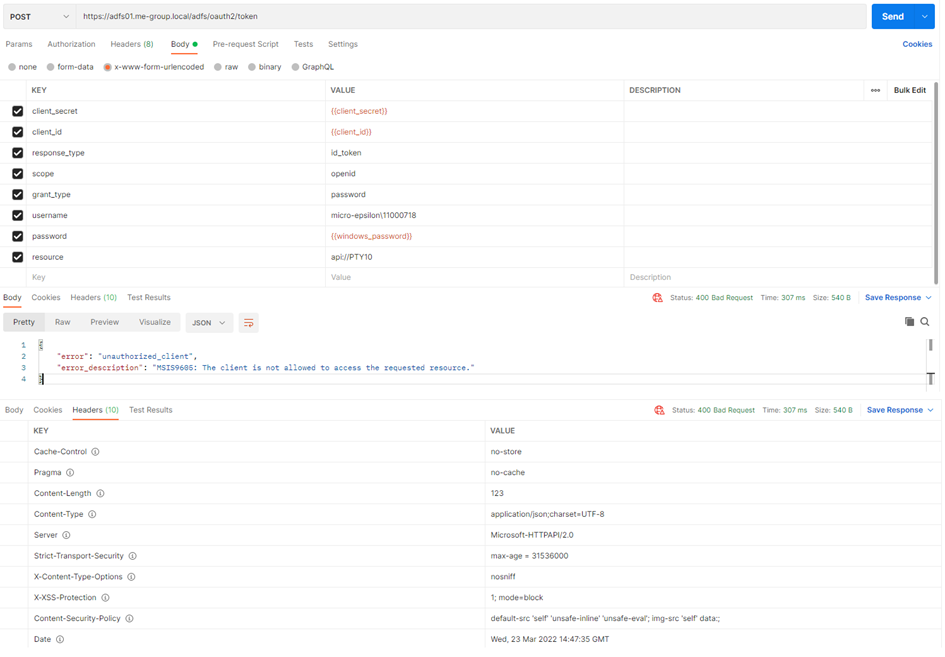The authentication to IFS should be handled via Active Directory Federation Services (ADFS). For this system, which had been prepared already for the usage Customer is now using ADFS authentication for the windows users.
Some software, for example some handheld scanners or some other software need to use own IFS Clients developed by the customer to connect. And these need to use ADFS.
Most of these are handled via java applications or via Postman.
For testing purposes with Postman the customer has tried to receive an Access Token from ADFS which should be used to authenticate to the IFS system.
Had been tested via OAuth2 Flows “Authorization Code” and “Resource Owner Password” as documented in the technical Docs.
The parameter resource had been set as well with the value “api://PTY10”.
You can see in the following picture that an error is displayed when the “Resource Owner Password Flow” is configured.

{
"error": "unauthorized_client",
"error_description": "MSIS9605: The client is not allowed to access the requested resource."
}
Unfortunately, the customer had not been able to solve this issue.
From his point of view, the call should be correct.
When using different parameters („resource“ / „client_id“ / „client_secret“ / „password“) the error message changes.
Not using the parameter resource displays a 401 message from IFS.
Maybe the ADFS Server is configured in a wrong way?
What the customer had tested first:
Using the Resource parameter with value „ifs-pty01.me-group.local:51080“ instead of „api://PTY10“ you receive a token from the ADFS Server.
With this token, only the error message 401 is received.
IN addition to that, Troubleshooting Detailed ID Asserter Logging had been acitivated in the MWS.
In this message you can see the following
commons.exceptions.OpenIdAssertionFailureException: Details: Expected: "api://PTY10". Found: [ifs-pty01.me-group.local:51080]..
This implies that the resource has to be set to “api://PTY10”. But this is not accepted by the ADFS Server.
Any suggestions on that?




